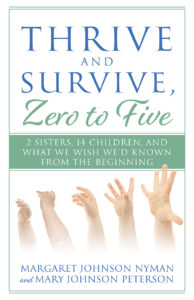Nelson’s most difficult battle through the last 13 weeks has been the struggle to breathe. He acknowledges that the fear of not being able to breathe is an ongoing assault on his mind and emotions. Without the ability to take the next breath, there’s no Plan B.
Our many Q & A sessions with doctors and nurses have done a lot to educate us on how to best deal with Nelson’s cancer and what to do if a breathing crisis occurs.
Nurse Practitioner Jean was most helpful the other day when she said, “If you feel a crisis coming on, try to figure out it’s source—whether it’s emotional or physical. If it’s emotional, then know that you can distance yourself from it without medical help. If it’s physical, go to the ER.”
 Also helpful with breathing issues is to have Nelson’s right lung drained daily. Until four days ago, that process had only been done by a doctor or nurse in a clinical setting, every several days. Now it’s happening daily, and Ann Sophie is the one doing it—at home.
Also helpful with breathing issues is to have Nelson’s right lung drained daily. Until four days ago, that process had only been done by a doctor or nurse in a clinical setting, every several days. Now it’s happening daily, and Ann Sophie is the one doing it—at home.
Once she unwraps the catheter going directly into Nelson’s lung, she attaches the single-use tubing at both ends, and the fluid begins to flow into a bottle. This must be a sterile process, and only she, wearing her sterile gloves, can touch the many sterile parts included in the process.
When Nelson’s lung begins to hurt or the flow includes bubbles, she knows it’s time to quit. Sometimes his pain increases afterwards, and sometimes it doesn’t. We’re thankful we don’t have to return to a medical facility every day to get this done. When it’s completed, his breathing is often improved.
 By measuring the amount of drained fluid his lung produces each day, we can determine if the chemo and immunotherapy are eliminating cancer cells or not. Today is Day #4 of the daily drainings, and the amount has, indeed, lessened slightly every day.
By measuring the amount of drained fluid his lung produces each day, we can determine if the chemo and immunotherapy are eliminating cancer cells or not. Today is Day #4 of the daily drainings, and the amount has, indeed, lessened slightly every day.
One of the disadvantages of shallow, ineffective breathing has been Nelson’s inability to sleep lying down. The lung fluid tends to do just what a bottle of water does when put on its side–level out toward his throat. In that process, he quickly feels like he’s drowning…thus nights on the couch.
 For the last 10 weeks or so, he’s been sleeping in a sitting position, straight up-and-down. It doesn’t make for a good night.
For the last 10 weeks or so, he’s been sleeping in a sitting position, straight up-and-down. It doesn’t make for a good night.
Yesterday, for the first time, he decided to try lying down, once his lung had been drained. Amazingly, he took a brief nap, flat on the bed, before needing to get upright.
 Today he tried again, this time sleeping for nearly an hour on his side before getting up. Something like a nap on the floor might not be a big deal in the great scheme of things, but for us, it’s hallelujah-time!
Today he tried again, this time sleeping for nearly an hour on his side before getting up. Something like a nap on the floor might not be a big deal in the great scheme of things, but for us, it’s hallelujah-time!
“The Lord your God is he who goes with you to fight for you against your enemies, to give you the victory.” (Deuteronomy 20:4)

